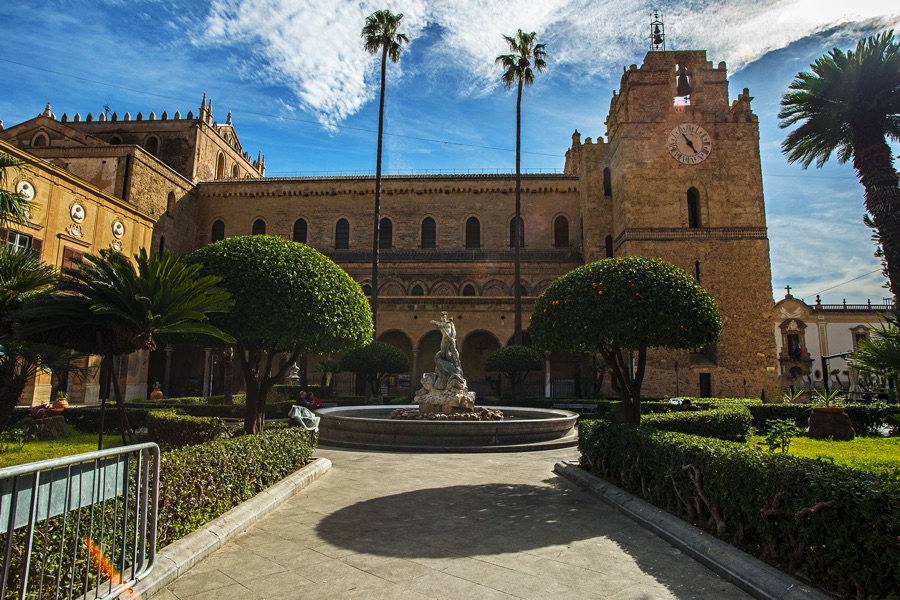A monastery designed for a community of monks or nuns, under the authority of an abbot or abbess, is a complex of various buildings (church or in the case of Cefalù and Monreale Cathedral, refectory, cloister, library, chambers and dormitories, kitchens, storerooms etc.) which in ancient times could be economically self-sufficient thanks to the work of the monks. The monasteries became cities in which the monks lived according to their rules and with a precise intention of evangelisation. The Benedictine Rule, which proposed a communal life according to the principle of Ora et Labora, or pray and work, was drafted by St Benedict of Nursia in 534. The Benedictine Monastery of Monreale, at the behest of William II, became a point of ecclesiastical reference for the entire Sicilian territory, so the king decided to grant it to the Benedictines who arrived from Cava dei Tirreni. The entire abbey complex revolves and develops around the cloister, the space where the various areas of community life were separated, and the place of contemplation where the ‘Story of Salvation’ was artistically represented in the sculptures on the capitals or in the wall frescoes.